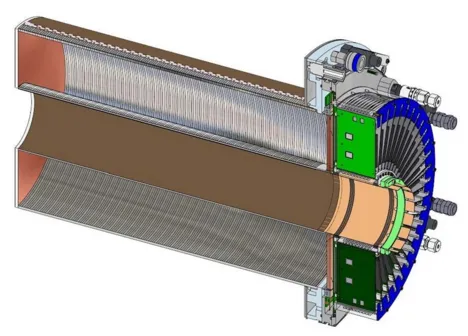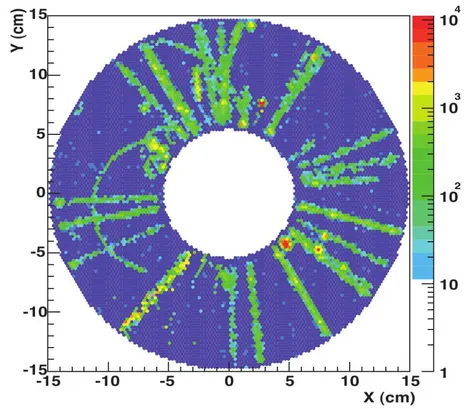Aim of the project

Modern high precision experiments with high particle rates demand detectors which are capable to cope with high track densities and charge up effects. A TPC (Time Projection Chamber) with GEM (Gas Electron Multiplier) foils for the amplification instead of conventional MWPC's is such a detector. TPC's are widely used in many running experiments, for example in STAR and ALICE where one has high track density environments. Due to the high spatial resolution of the TPC a clean identification of several thousands of tracks per event is possible. These TPC's however are operated in a gated mode to prevent back drifting secondary ions from the amplification stage to distort the drift field. A TPC without the necessity of gating would be an excellent option for an inner tracker for upcoming experiments like PANDA which are running continuously. The amount of back drifting ions can be reduced by several orders of magnitude by using GEM foils for the amplification, exploiting their intrinsic ion back flow suppression. To investigate the performance of such a detector a prototype was built. It was designed as a fully functional detector to be used as an upgrade for the FOPI experiment at GSI, Darmstadt (Germany) and for the CBELSA experiment in Bonn (Germany).
What happened so far

Together with different groups we suceeded in building a prototype of the GEM-TPC. This prototype was installed as an inner tracker of the FOPI spectrometer. With this combined setup the following measurements have been done: 84 Kr (Ekin=1.2 AGeV), 197 Au (Ekin=1.0 AGeV), 22 Ne (Ekin=1.7 AGeV) and 14 N (Ekin=2.0 AGeV) with an 2% Al-target. Gain uniformity calibration using Krypton was also done. For all measurement two different drift gases were used, namely: Ar/CO2 and Ne/CO2 (90/10). To analyze the detector performance cosmic rays were measured with varying drift gases, drift fields and gains. Finally, we had a 3 weeks physics run with a pion-beam on different targets. A typical event with several tracks inside the GEM-TPC is shown in the right picture.